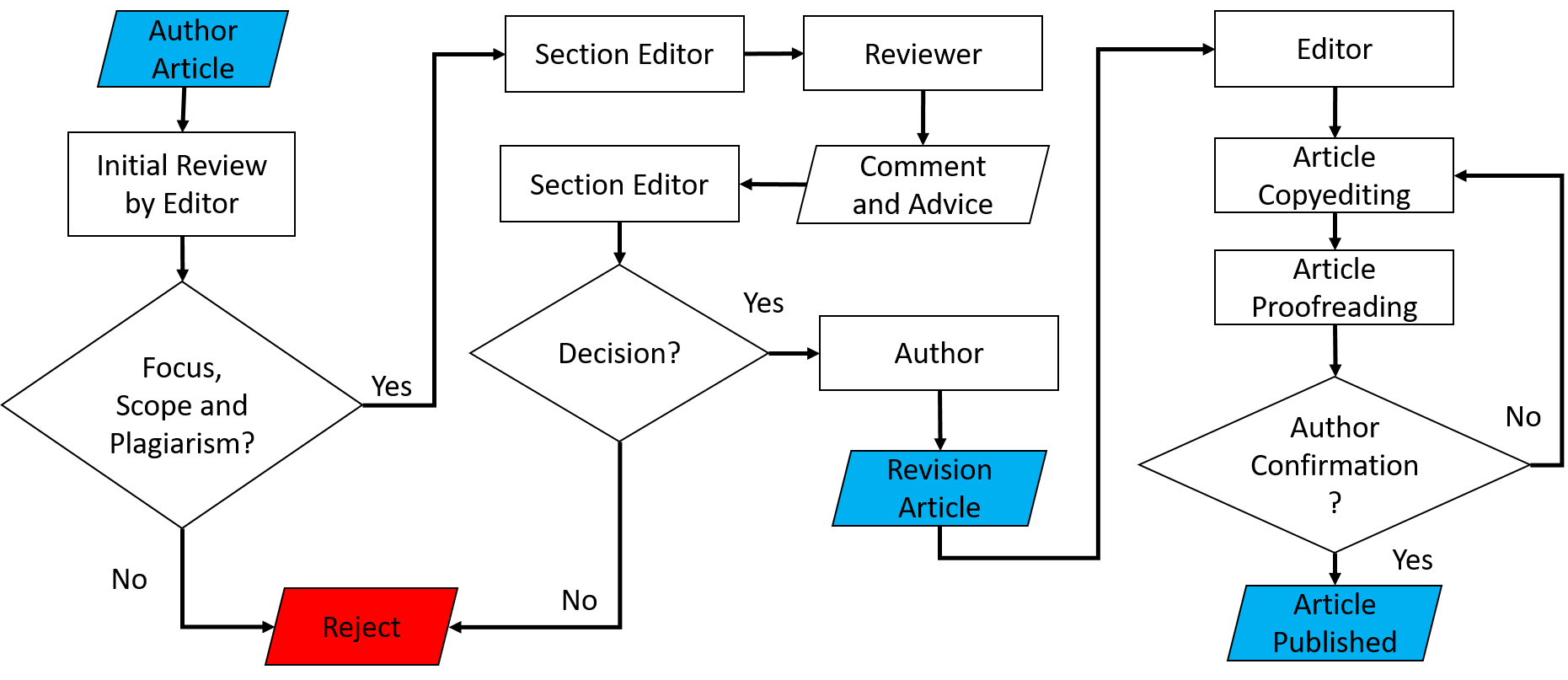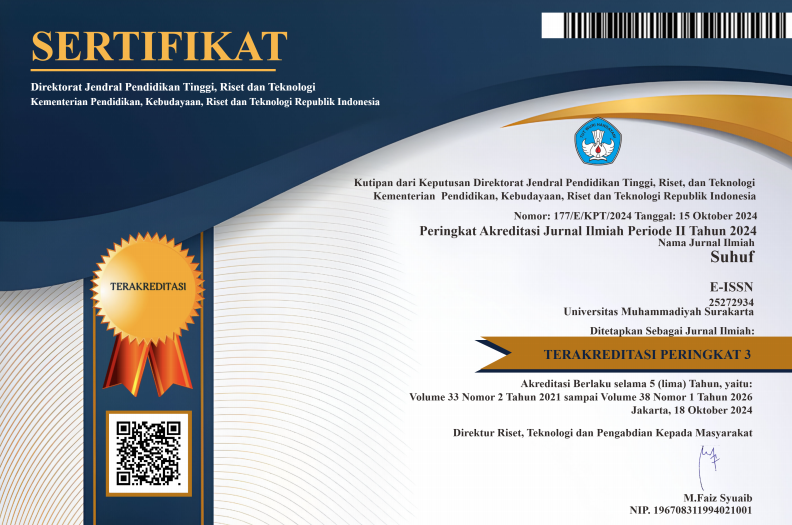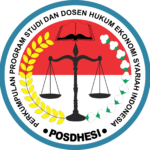Editorial Board Reviewers Peer Review Process Author Guidelines Publication Ethics Generative AI Policies Open Access Policy Plagiarism Policy Focus and Scope Article Processing Charge Abstracting and Indexing Contact Journal Metrics Digital Archiving Scopus Citation
Peer Review Process
(COPE Ethical Guidelines for Peer Reviewers)
If ETHICA’s Editor has invited you to review a manuscript, please consider the following items:
- Reviewing manuscript critically but constructively and preparing detailed comments about the manuscript to help authors improve their research;
- Reviewing multiple versions of a manuscript as necessary;
- Providing all required information within established deadlines;
- Making recommendations to the editor regarding the suitability of the manuscript for publication in the journal;
- Declaring to the editor any potential conflicts of interest concerning the authors or the content of a manuscript they are asked to review;
- Reporting possible research misconducts;
- Suggesting alternative reviewers in case they cannot review the manuscript for any reasons;
- Treating the manuscript as a confidential document;
- Not making any use of the work described in the manuscript;
- Not communicating directly with authors if somehow they identify the authors;
- Not identifying themselves as authors;
- Not passing on the assigned manuscript to another reviewer;
- Ensuring that the manuscript is of high quality and original research;
- Informing the editor if he/she finds the assigned manuscript is under consideration in any other publication to his/her knowledge;
- Writing a review report in English only;
- Authoring a commentary for publication related to the reviewed manuscript.
What should be checked while reviewing a manuscript?
- Novelty;
- Originality;
- Scientific reliability;
- A valuable contribution to science;
- Adding new aspects to the existing field of study;
- Ethical aspects;
- Structure of the article submitted and its relevance to authors’ guidelines;
- References provided to substantiate the content;
- Grammar, punctuation, and spelling;
- Scientific misconduct.

Here is the description of the journal submission process as illustrated in the flowchart:
-
Submission by Author:
- The author submits the article to the journal.
-
Initial Review by Editor:
- The editor conducts an initial review to check the focus, scope, and plagiarism of the article.
- If the article does not meet these criteria, it is rejected.
- If the article meets these criteria, it proceeds to the section editor.
-
Review by Section Editor:
- The section editor evaluates the article and may send it to reviewers for comments and advice.
- Reviewers provide feedback and recommendations to the section editor.
-
Decision by Section Editor:
- Based on the reviewers' comments and advice, the section editor decides.
- If the decision is negative, the article is rejected.
- If the decision is positive or requires revisions, the author is notified.
-
Revision by Author:
- If revisions are required, the author revises the article and resubmits it.
- The revised article is reviewed again by the section editor and potentially the reviewers.
-
Final Review and Copyediting:
- If the revised article is accepted, it moves to the final review and copyediting stage by the editor.
- The article undergoes copyediting and proofreading.
-
Author Confirmation:
- The author is asked to confirm the article's final version after proofreading.
- If the author confirms, the article is published.
- If the author does not confirm, further revisions may be required.
-
Publication:
- Once the author confirms, the article is published in the journal.
Peer review models
Single-anonymous peer review
The author's name is hidden from the reviewers; however, the author's name is shared with the reviewers. The fact that reviewers remain anonymous means they can speak honestly and impartially. Meanwhile, knowing an author’s identity can help reviewers place an article in the context of the author’s earlier work.
Double-anonymous peer review
The reviewers aren’t told the author's name, and the author never learns the names of the reviewers. Outside of the triple-anonymous model (see below), this is the surest way to ensure the process is completely objective. The focus remains on the article's content, and the possibility of reviewer bias is eliminated. Reviewer bias may be favorable or unfavorable, conscious or unconscious.
Triple-anonymous peer review
The identities of the author, reviewers, and editors remain hidden from each other. The author is usually identified only by a number, and communication takes place through a website or submission system. This eliminates any potential bias.
Open peer review
This can vary in form. It may be as simple as making the author and reviewers known to one another, or the reviews – and the reviewers’ names – may be published alongside the article. The review process may occur pre- or post-publication, and reports may receive their DOIs, making them discoverable and citable. This offers complete transparency. Some believe the knowledge that reports will be published encourages reviewers to produce higher-quality reports. The post-publication format publicly recognizes the important work of the reviewers.
Our approach to article peer review
Most of our journals, published by Universitas Muhammadiyah Surakarta, have adopted a double-anonymous peer review model, with reviewers invited by the journal editor.
Some journals have also been experimenting with an article transfer or cascading service. Suppose the editor decides to decline the manuscript, either before or after peer review. In that case, they may offer to transfer it to a more relevant journal within Universitas Muhammadiyah Surakarta's publication portfolio. If the author accepts that offer, any reviews that have already taken place are transferred to the new journal and the manuscript.
"Quality peer review is constructive, non-confrontational and prompt. It means putting yourself in the position of the author and helping them to bring out the best in their paper." (Anne-Wil Harzing – Professor of International Management at Middlesex University, London)


















